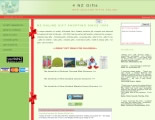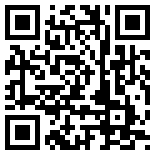 Pursuing, attaining, and maintaining a competitive position in the market is at the heart of an effective marketing communications plan. Pursuing, attaining, and maintaining a competitive position in the market is at the heart of an effective marketing communications plan.
A well-crafted positioning statement defines your company's direction. It answers two essential questions from the customers' point of view: "What's different about your business?" and "What unique benefit is derived from your product or services?"
Surprisingly, few companies exist where management is in total agreement on those answers—or even where the answers can be found.
The basic reason for answering those questions is to carve out turf that your brand aims to hold against competitors. That's differentiation. The difference between what you offer and what others offer is important to customers.
Ideally, you'll discover the important, single difference through research and strategic thinking.
Standing Out From the Competition
How can we win against competitors? What can we do that they are not doing, or cannot do or say, that's important to customers?
The statement should be defined in a clear, simple communications strategy that covers the two questions above. It can be a very short paragraph defining the differentiation claim with no more than three key messages that powerfully support the claim. Then it has to be consistently applied across the organization, which absolutely includes "walking the talk."
One thing successful brands have in common is they've established a clear difference that's reflected in how they do things, what they're known for, or what they create.
There are many opportunities for differentiating a new brand. It may how something is made, where it is made, how many years it has been made, the ingredients, how "hot" or "cool" it is, how easy it is to find, and level of social consciousness (think Newman's Own and Patagonia). Jack Trout's valuable book Differentiate or Die provides great insight and is the best read on the subject I've encountered.
Apple has differentiated itself in computers; Wal-Mart, Ikea, and Home Depot have in retailing for differing reasons. Waterford has it in crystal glassware. Porsche and Toyota have it in cars. Navy Seals have it among military services. McDonald's has it in fast food. Jack Daniels has it in whiskey. Yosemite National Park has it in recreational destinations. Those companies all have established a "position" in the mind of the market, the people who care about what they offer. That perception is nourished and supported by organizations they want to keep it.
New brands have to carve out a new place in people's minds that's different. How that's done well is whole other story. Attempting to be a "me, too" or copycat is not usually a successful strategy.
What's Expressed by a Brand?
Positioning establishes business credentials and the mental "territory" you want to own. What does branding do for you? Can you even do branding for a small company?
Though you don't have a branding staff, proper branding can, and should, be done right from the start or from the restart of a business.
The first essential thing to know is that a brand is not a logo or color scheme, although this is a common misconception. Rather, a brand is a promise of an experience.
If you don't brand yourself, your competitors might... and your customers will eventually do so, too. But is that what you want? Is that what you want your employees to believe in and use as their guide in all their other marketing decisions?
Examine all your brand touchpoints by seeing where you interact with customers—and for how long and at what depth at each of these points. Don't be surprised if some of these key touchpoints are in service or support, for example. Rank and rate these places, and also develop a list of key brand values. Then you can easily compare them with competitors and make sure you are different and that you provide customers with the appropriate experience.
There are places where smaller companies can provide branded experiences and services that are very personable and customizable to individual, localized needs—something that is very hard and often impossible for larger companies to accomplish. Even if larger companies pretend to offer personalized service, their large employee base may not care to execute on that promise—not that they would probably admit it.
Little Things Make a Big Difference
Small acts matter. Like answering a phone even though you are an online business. Or having a short delivery channel. Or an easy try-and-buy campaign with an easy return policy. Or personal customer support with personalized email. Or smart uniforms for your drivers. But you can't claim a high-class brand position when you know you are offering cheap service. No problem, there are markets for most positions. Just know which one is yours.
Your brand values should be documented and shared throughout the company and your different marketing agencies. And all (including designers and planners) who interface with customers should be educated about striving to maintain these values.
Your brand promise then becomes the golden thread that helps shorten and clarify all design and management decisions. Sometimes, you may have to ignore good ideas because they just don't fit in your company.
* * *
So, what about that name, logo, font, color scheme, tagline, and style guide?
Now, you see them as shorthand for the brand promise. They bring a consistent message to your customer and prospect base, across all channels, sales, and social media. The world learns what these words or symbols stand for—even though your world may be a small niche market where you have established a position and focused your brand efforts. Your customers and prospects know what to expect when you reach out to them while the visual aspects give them the memory handle for the experience promise.
* * *
Ford Kanzler is principal at Marketing/PR Savvy, a public relations and communications firm.
Athol Foden is president of Brighter Naming, a company specializing in the name development process.
This article can be viewed online - www.marketingprofs.com
A great way to improve your link popularity which is directly related to your search engine ranking, is to take advantage of our FREE classified advertisement offer. We have "classifieds" on our four town websites
SEE BELOW >>>>
They receive an enormous amount of visitors and are extremely well ranked in the top search engines - if you're not there you're missing out !! All you have to do is forward us 25 words about your business - a breeze surely !! Your classified advertisement will be linked to your website and can also have an email link on it if requested.
|










